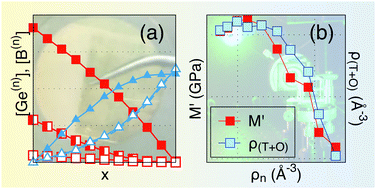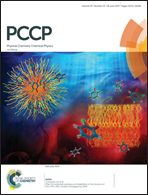Elastic properties and short-range structural order in mixed network former glasses
Abstract
Elastic properties of alkali containing glasses are of great interest not only because they provide information about overall structural integrity but also they are related to other properties such as thermal conductivity and ion mobility. In this study, we investigate two mixed-network former glass systems, sodium borosilicate 0.2Na2O + 0.8[xBO1.5 + (1 − x)SiO2] and sodium borogermanate 0.2Na2O + 0.8[xBO1.5 + (1 − x)GeO2] glasses. By mixing network formers, the network topology can be changed while keeping the network modifier concentration constant, which allows for the effect of network structure on elastic properties to be analyzed over a wide parametric range. In addition to non-linear, non-additive mixed-glass former effects, maxima are observed in longitudinal, shear and Young's moduli with increasing atomic number density. By combining results from NMR spectroscopy and Brillouin light scattering with a newly developed statistical thermodynamic reaction equilibrium model, it is possible to determine the relative proportions of all network structural units. This new analysis reveals that the structural characteristic predominantly responsible for effective mechanical load transmission in these glasses is a high density of network cations coordinated by four or more bridging oxygens, as it provides for establishing a network of covalent bonds among these cations with connectivity in three dimensions.



 Please wait while we load your content...
Please wait while we load your content...